Lessons from the Columbia Disaster
 AI Summary
AI Summary
Key Insights
- The Space Shuttle Columbia disintegrated upon re-entry into Earth's atmosphere due to damage sustained during launch.
- A piece of insulating foam broke off during liftoff, striking the left wing and damaging the thermal protection system.
- Mission managers discounted the significance of the foam strike, and no inspection or contingency plans were implemented.
- NASA implemented corrective actions, including creating contingency plans for future missions and releasing a report with lessons learned.
- Both the Columbia and Challenger disasters highlighted requirement issues related to physical factors and human perception of risk and normalized violations.
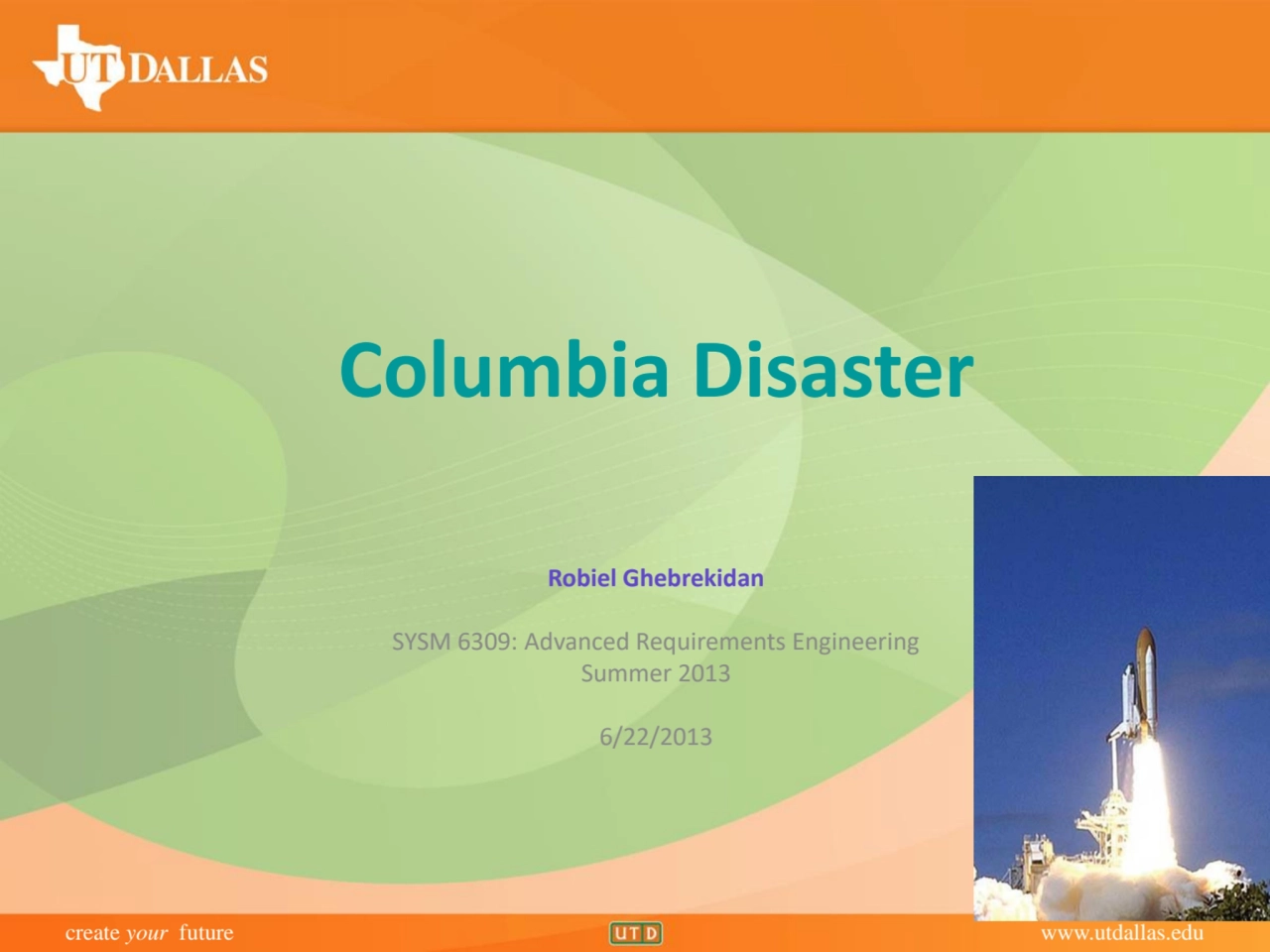
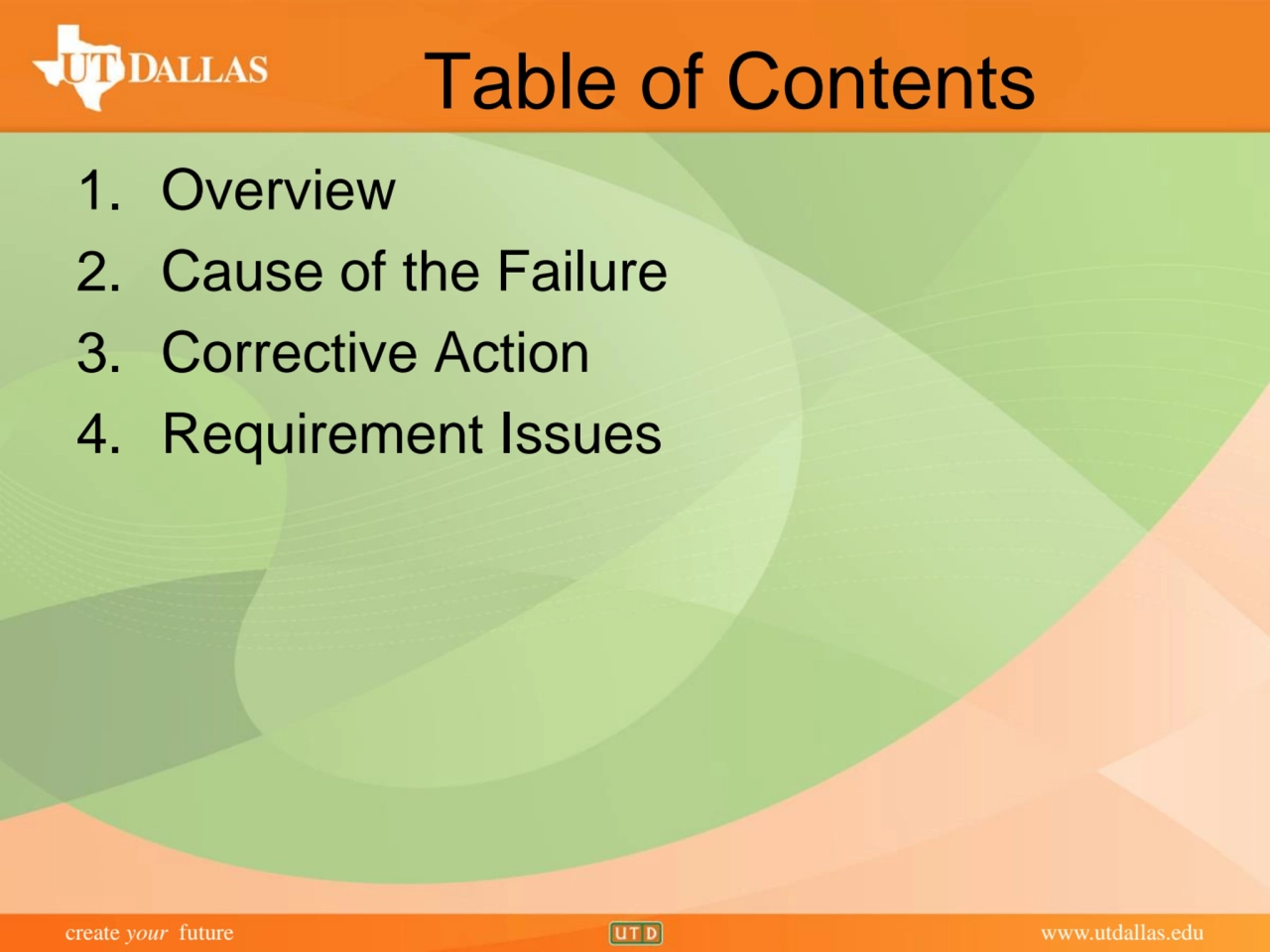
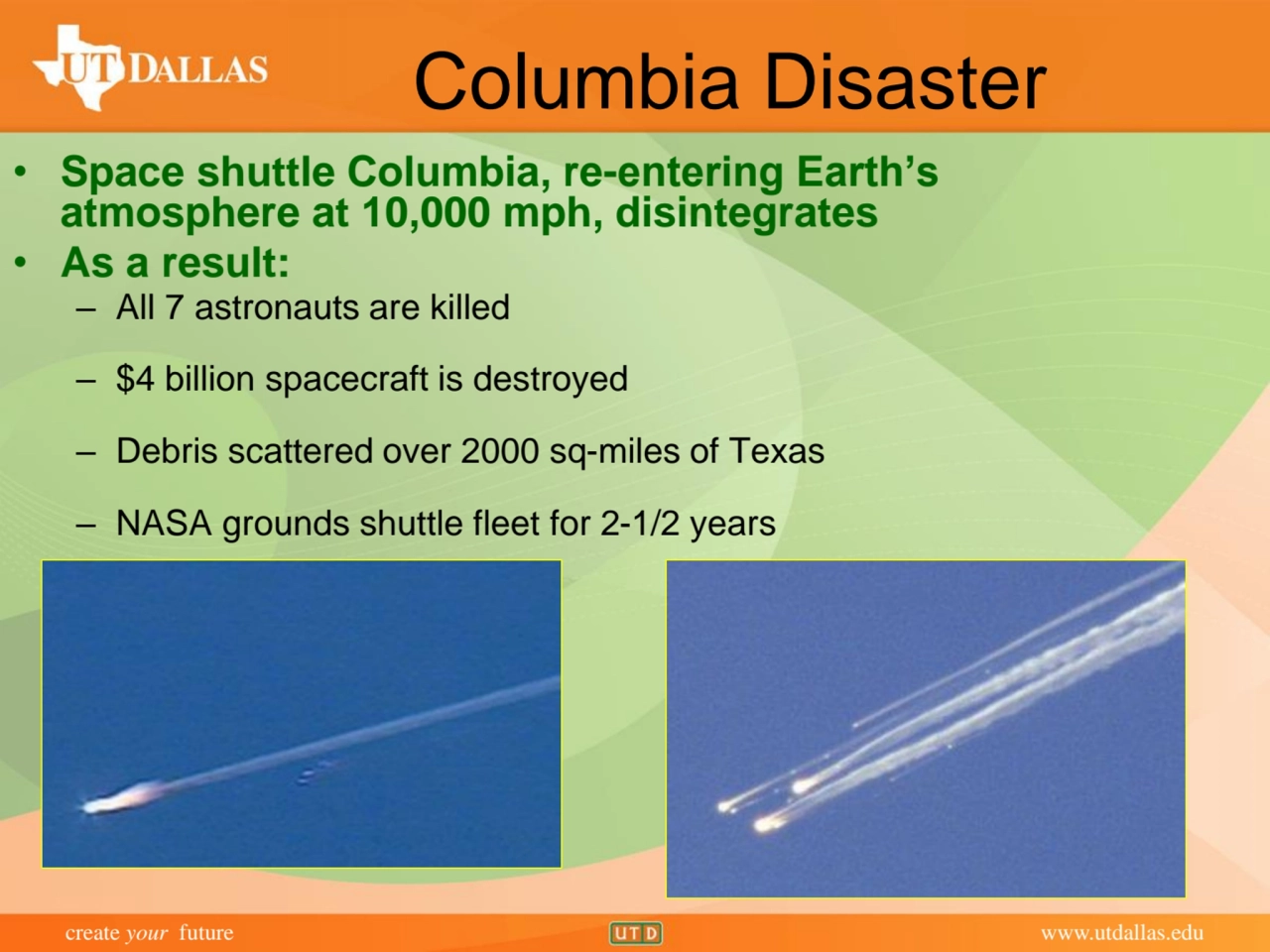
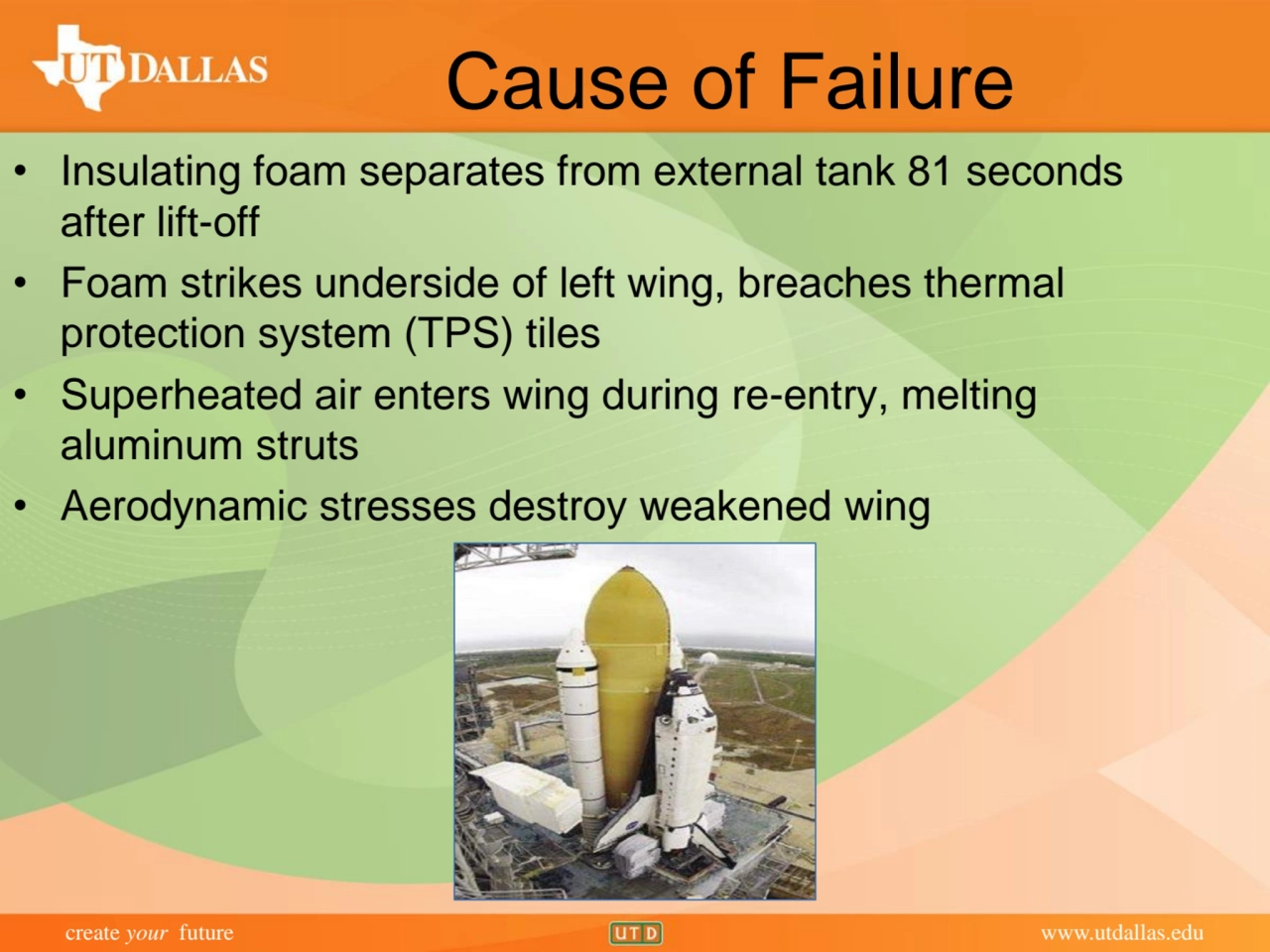
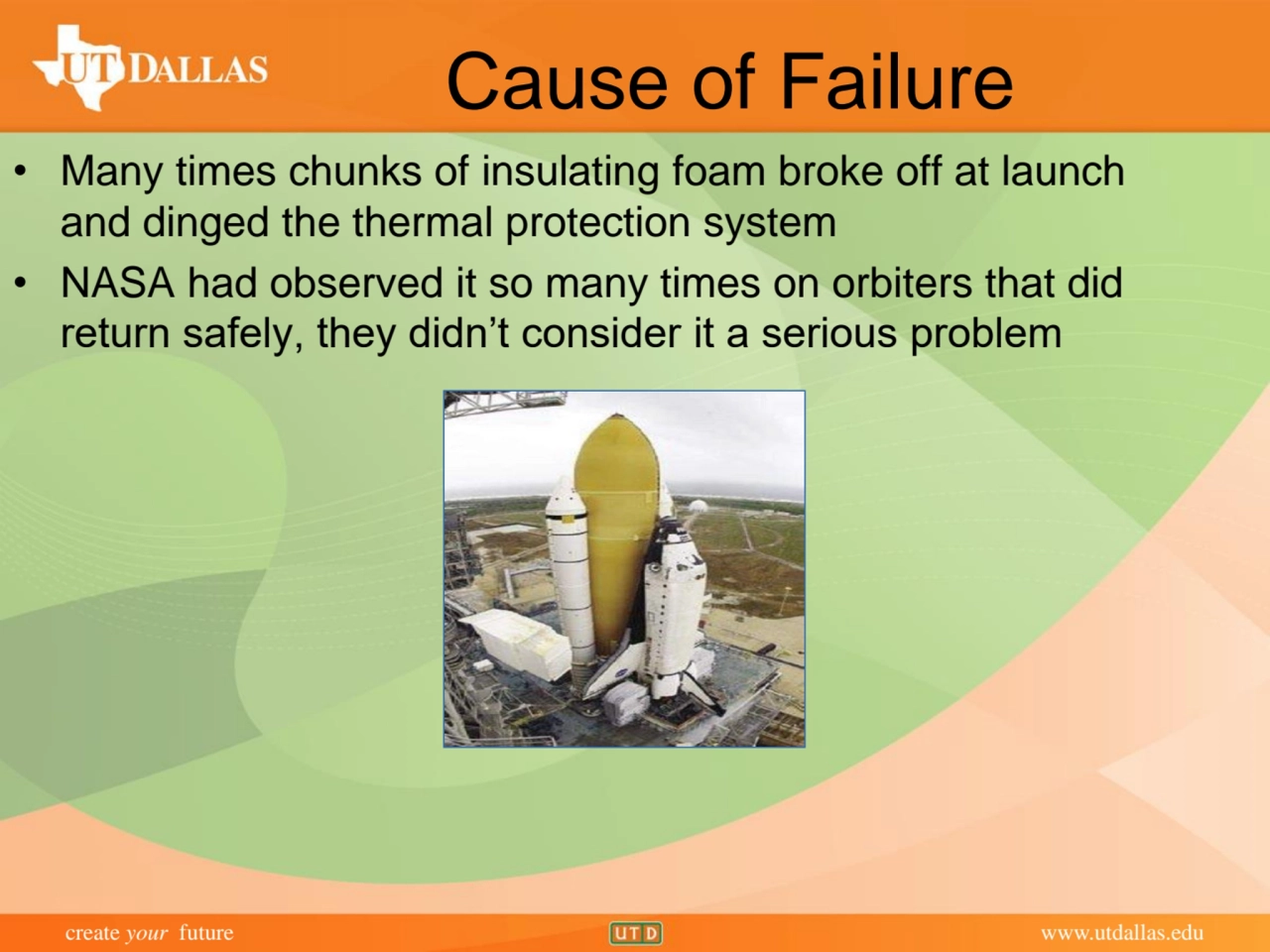
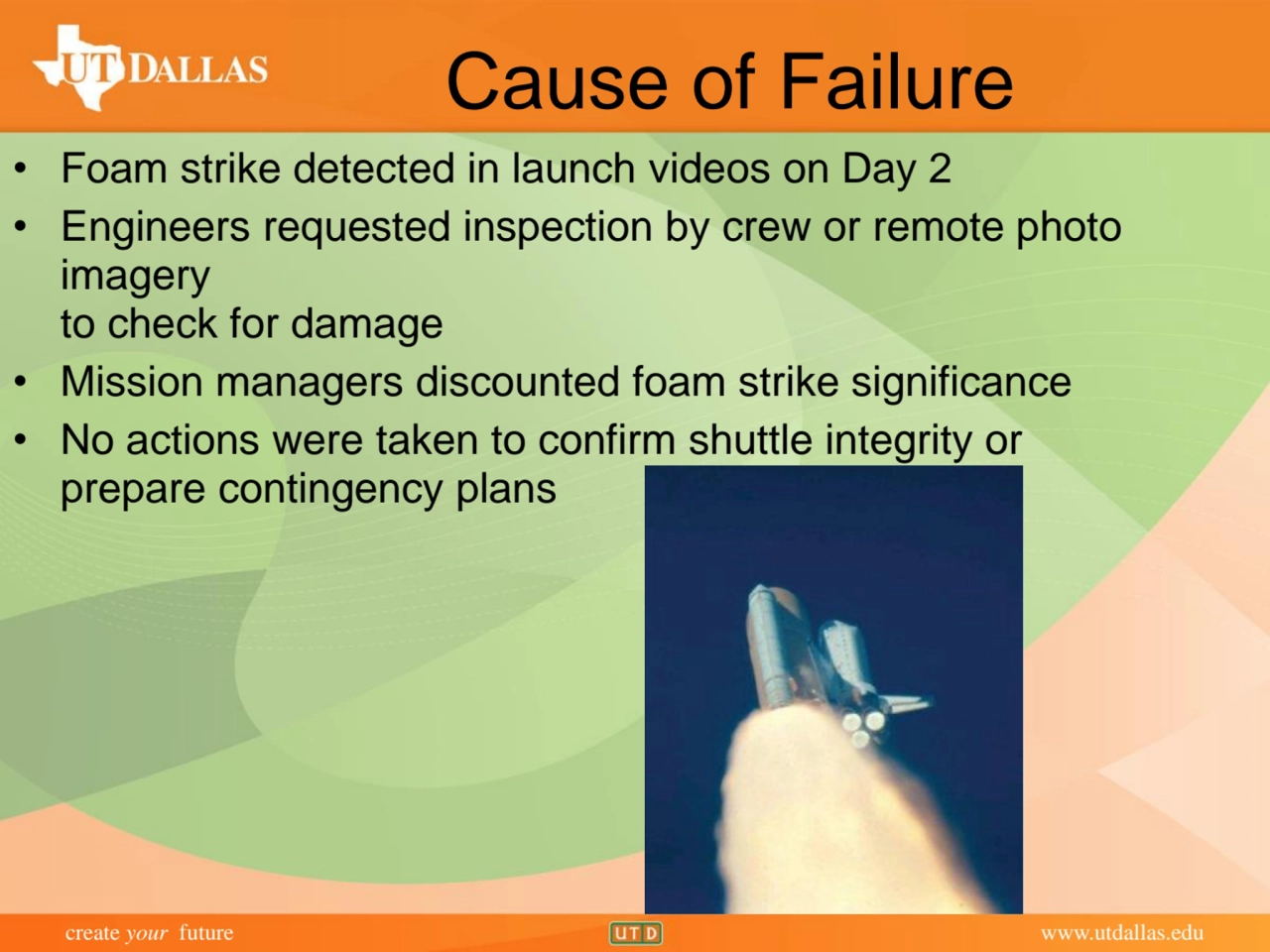
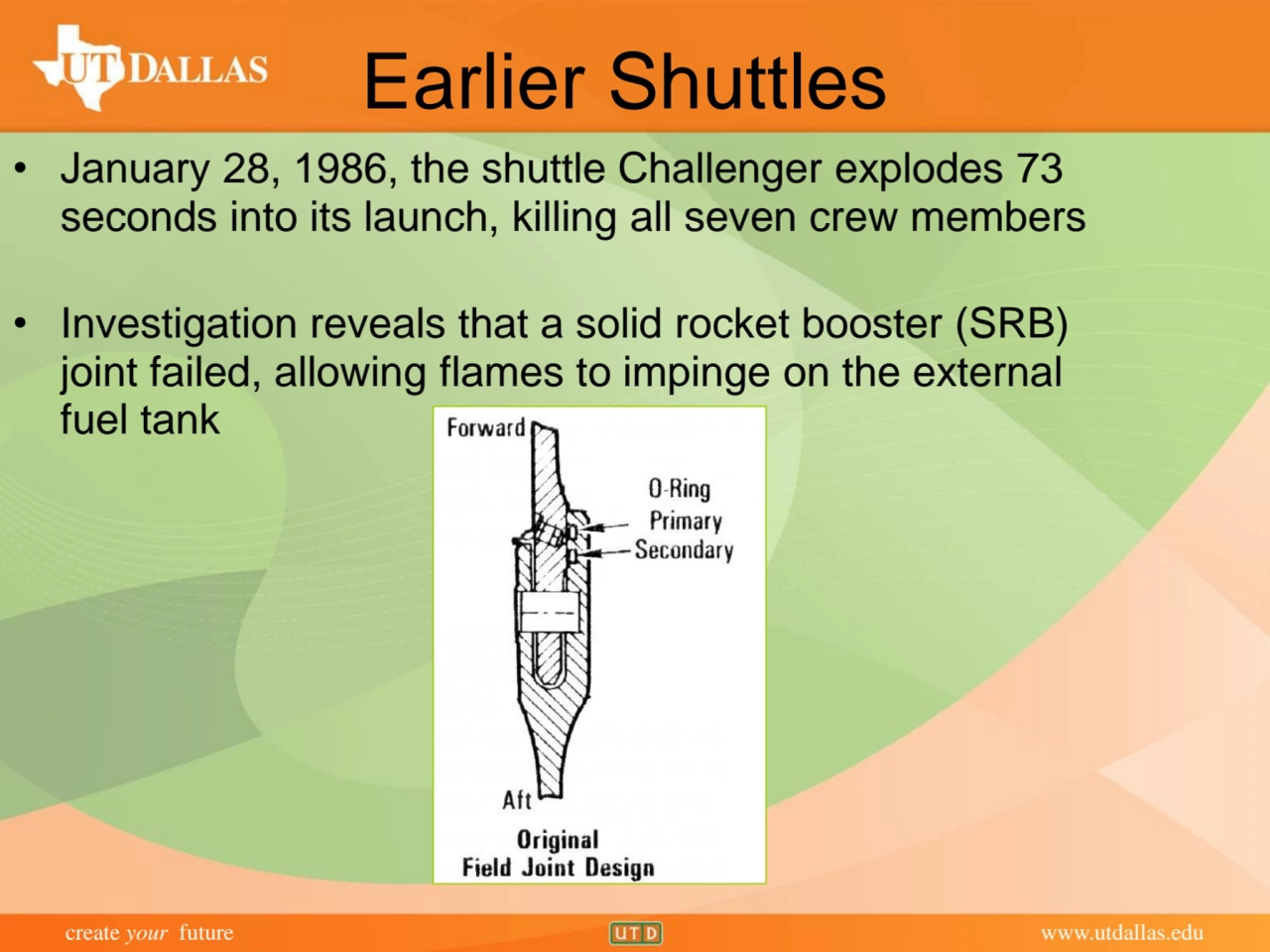
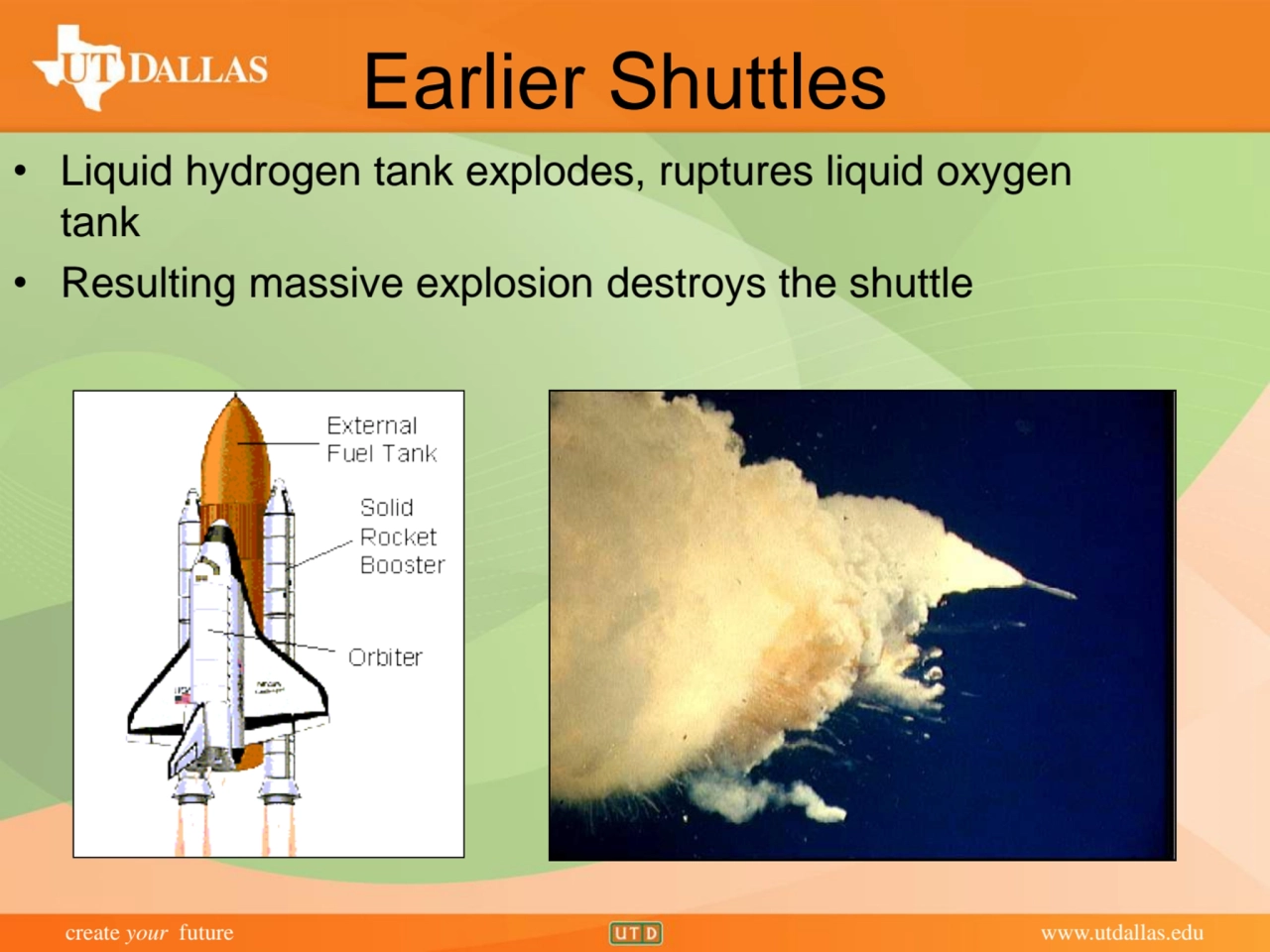
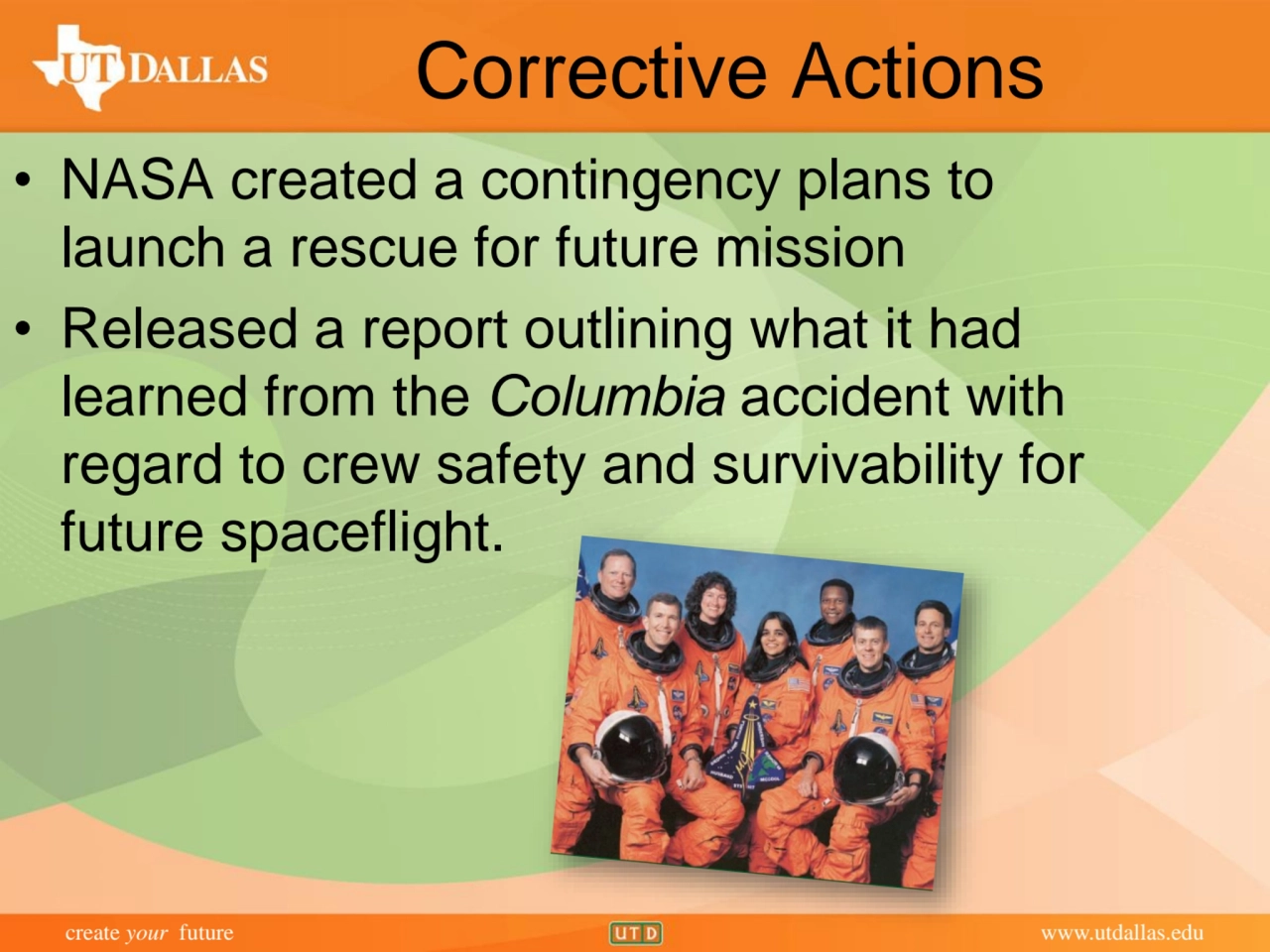
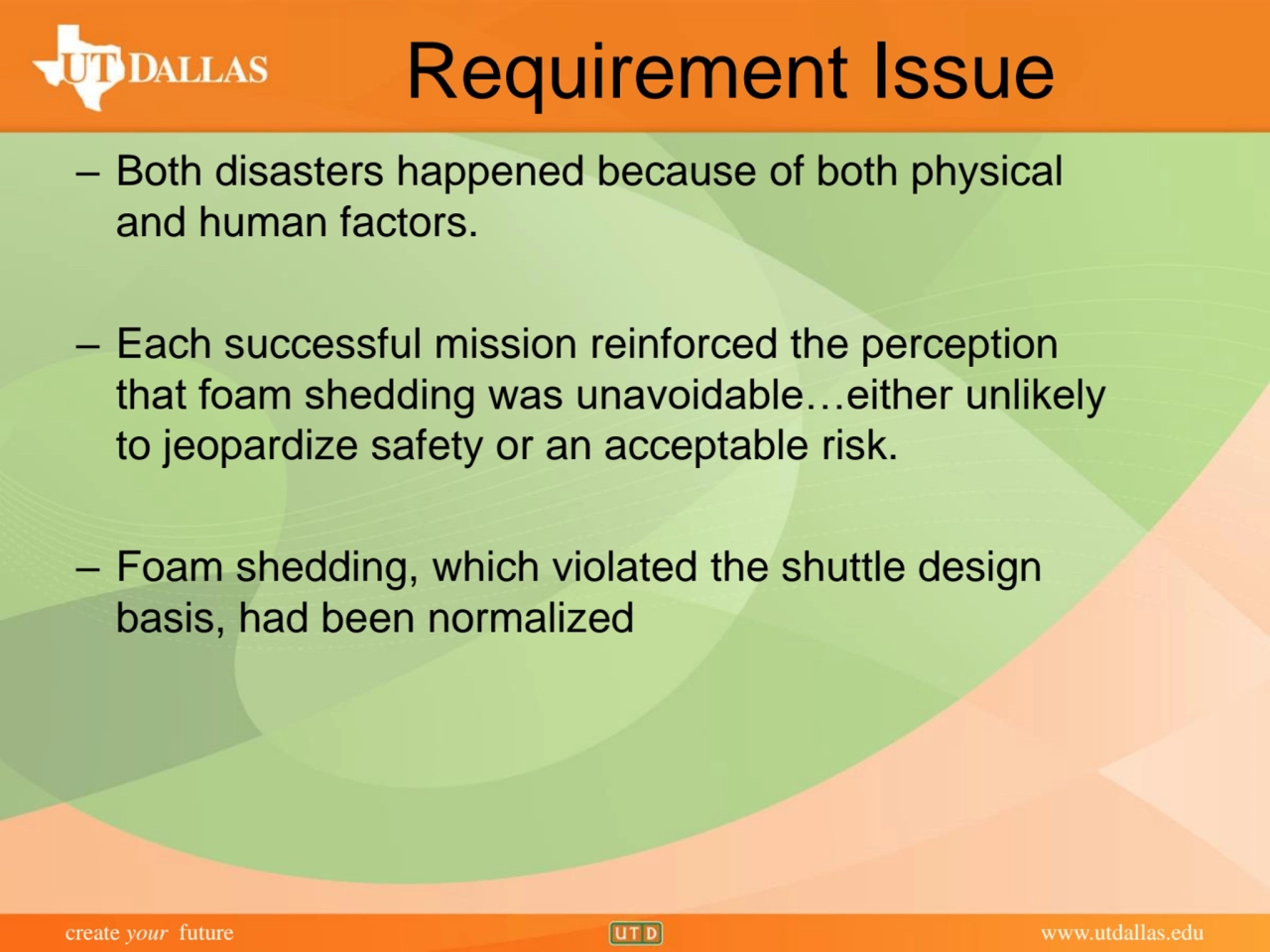
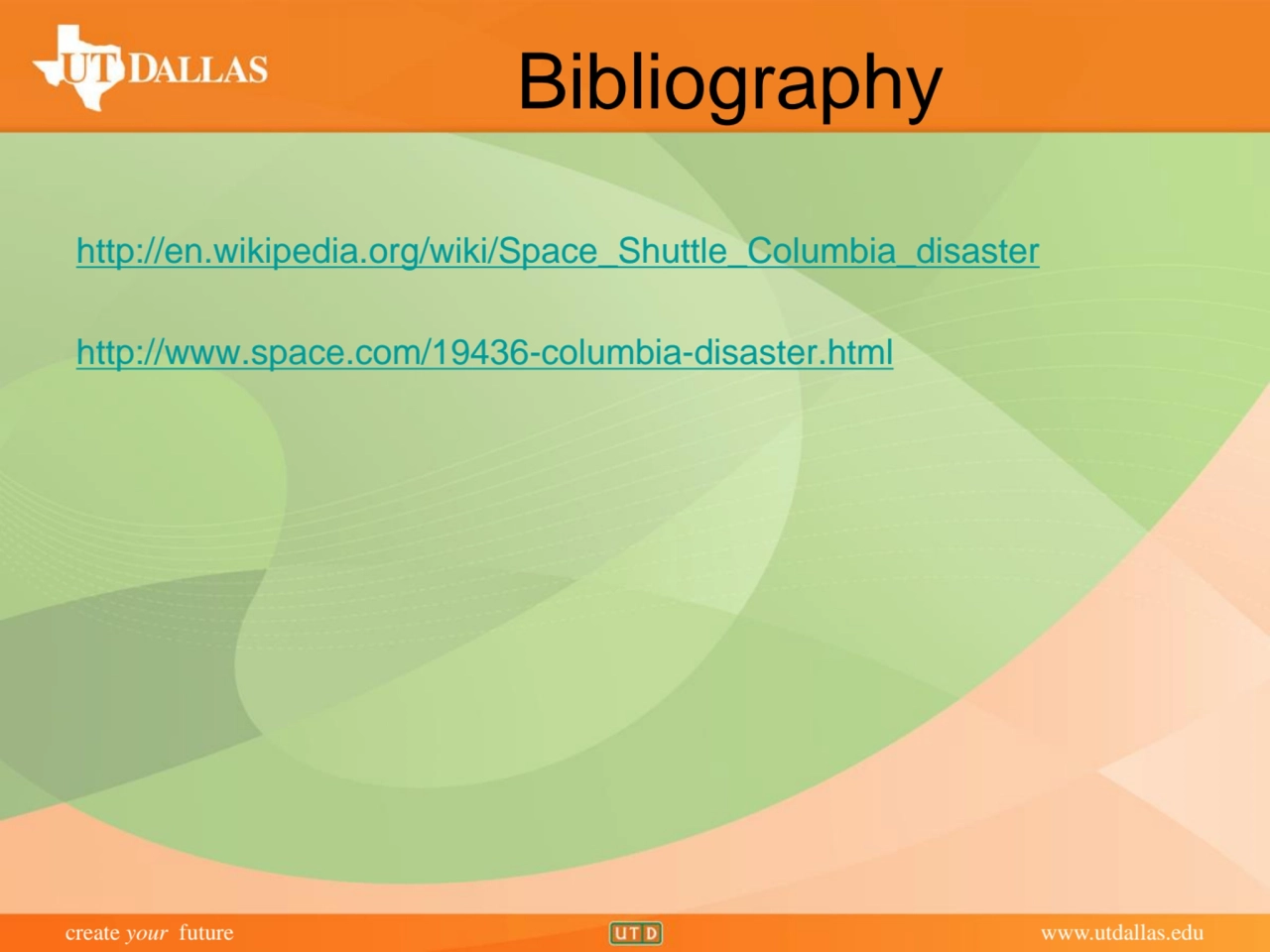
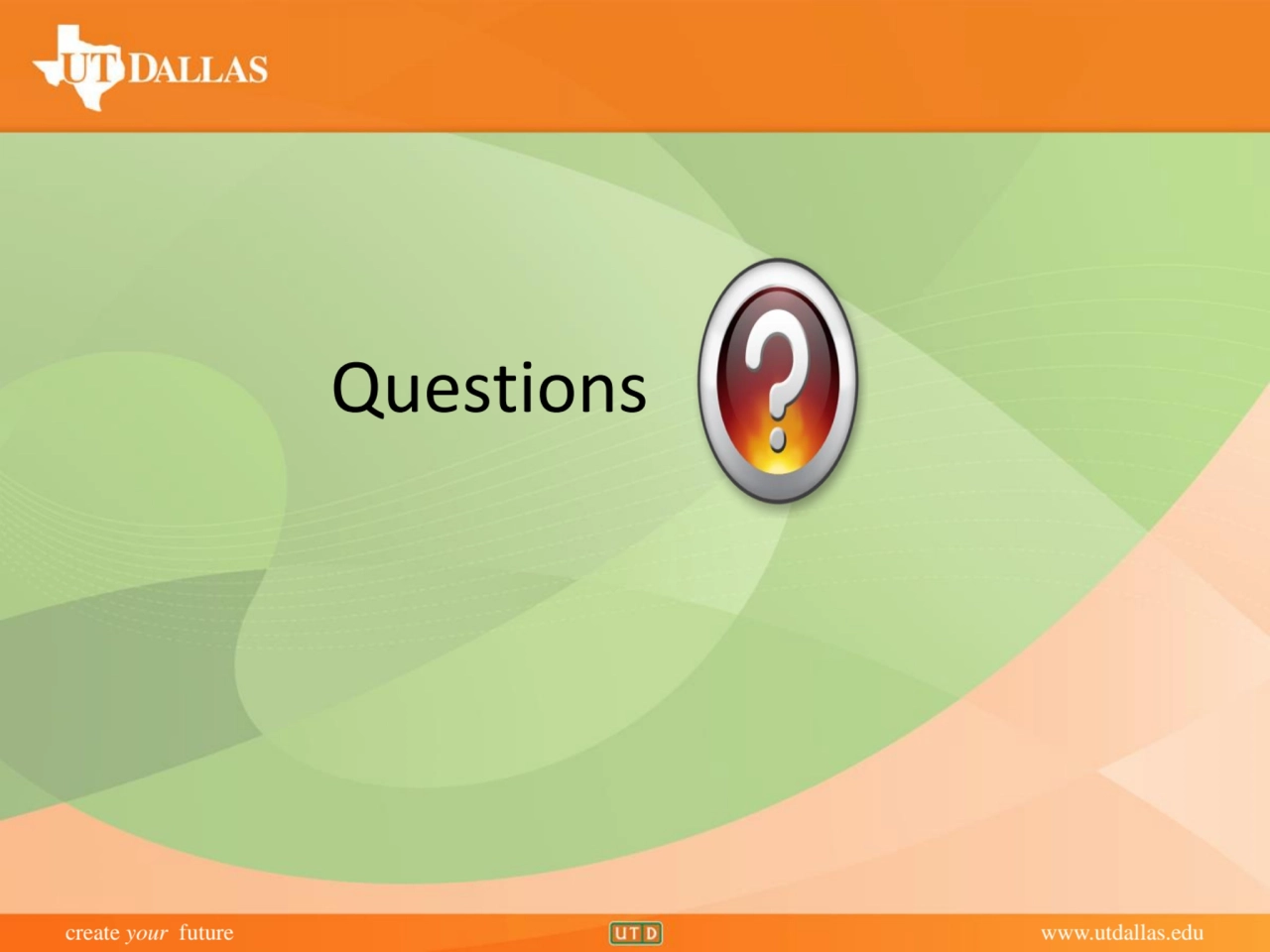
Lessons from the Columbia Disaster
- 1. create your future www.utdallas.edu Office of Communications Columbia Disaster Robiel Ghebrekidan SYSM 6309: Advanced Requirements Engineering Summer 2013 6/22/2013
- 2. create your future www.utdallas.edu Table of Contents 1. Overview 2. Cause of the Failure 3. Corrective Action 4. Requirement Issues
- 3. create your future www.utdallas.edu Columbia Disaster • Space shuttle Columbia, re-entering Earth’s atmosphere at 10,000 mph, disintegrates • As a result: – All 7 astronauts are killed – $4 billion spacecraft is destroyed – Debris scattered over 2000 sq-miles of Texas – NASA grounds shuttle fleet for 2-1/2 years
- 4. create your future www.utdallas.edu Cause of Failure • Insulating foam separates from external tank 81 seconds after lift-off • Foam strikes underside of left wing, breaches thermal protection system (TPS) tiles • Superheated air enters wing during re-entry, melting aluminum struts • Aerodynamic stresses destroy weakened wing
- 5. create your future www.utdallas.edu Cause of Failure • Many times chunks of insulating foam broke off at launch and dinged the thermal protection system • NASA had observed it so many times on orbiters that did return safely, they didn’t consider it a serious problem
- 6. create your future www.utdallas.edu Cause of Failure • Foam strike detected in launch videos on Day 2 • Engineers requested inspection by crew or remote photo imagery to check for damage • Mission managers discounted foam strike significance • No actions were taken to confirm shuttle integrity or prepare contingency plans
- 7. create your future www.utdallas.edu Earlier Shuttles • January 28, 1986, the shuttle Challenger explodes 73 seconds into its launch, killing all seven crew members • Investigation reveals that a solid rocket booster (SRB) joint failed, allowing flames to impinge on the external fuel tank
- 8. create your future www.utdallas.edu Earlier Shuttles • Liquid hydrogen tank explodes, ruptures liquid oxygen tank • Resulting massive explosion destroys the shuttle
- 9. create your future www.utdallas.edu Corrective Actions • NASA created a contingency plans to launch a rescue for future mission • Released a report outlining what it had learned from the Columbia accident with regard to crew safety and survivability for future spaceflight.
- 10. create your future www.utdallas.edu Requirement Issue – Both disasters happened because of both physical and human factors. – Each successful mission reinforced the perception that foam shedding was unavoidable…either unlikely to jeopardize safety or an acceptable risk. – Foam shedding, which violated the shuttle design basis, had been normalized
- 11. create your future www.utdallas.edu Bibliography http://en.wikipedia.org/wiki/Space_Shuttle_Columbia_disaster http://www.space.com/19436-columbia-disaster.html
- 12. create your future www.utdallas.edu Questions